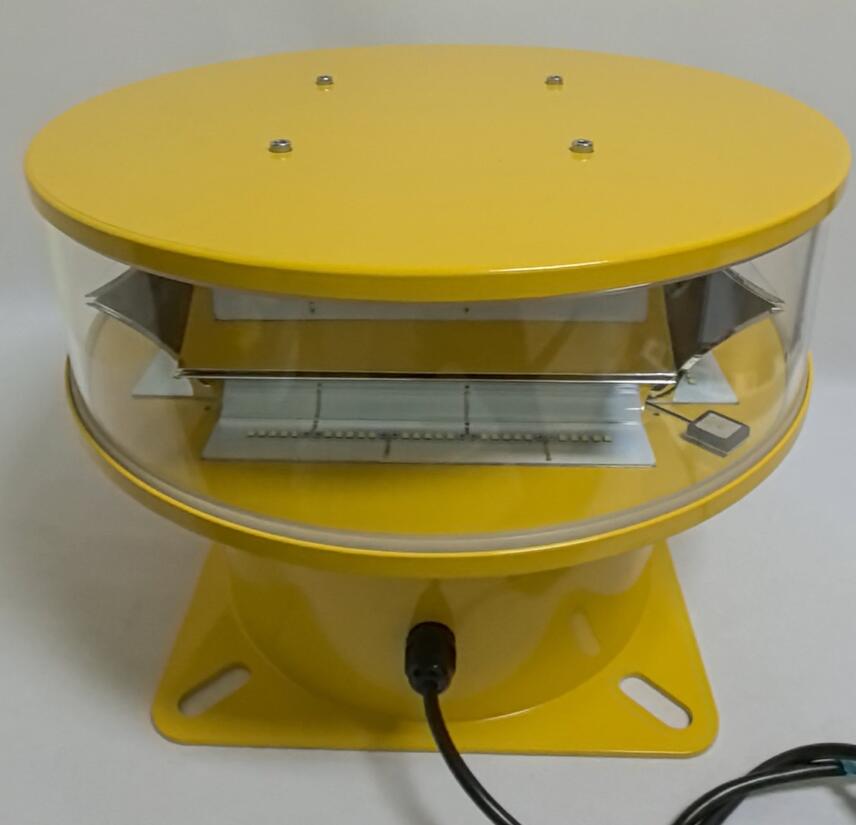Smart Illumination: How Aviation Lights with Photo Sensors Enhance Safety
Aviation lights with photo sensors are revolutionizing airfield and obstruction lighting by optimizing visibility while conserving energy. These intelligent systems automatically adjust brightness based on ambient light conditions, ensuring compliance with aviation safety regulations without unnecessary power consumption. This article explores the function, benefits, and technological advancements of aviation lights with photo sensors, highlighting their critical role in modern aviation infrastructure.

The Need for Adaptive Lighting in Aviation
Aviation lights serve as essential visual aids for pilots, marking runways, taxiways, and obstacles such as towers and wind turbines. Traditional lighting systems operate at fixed intensities, often remaining at full brightness even during daylight—a wasteful and sometimes counterproductive approach.
Aviation lights with photo sensors solve this problem by detecting ambient light levels and adjusting their output accordingly. This ensures optimal visibility while reducing energy usage and maintenance costs.
| aviation light with photo sensor |
How Aviation Lights with Photo Sensors Work
Photo sensors, also known as photoelectric cells or photocells, measure the intensity of natural light in the surrounding environment. When integrated into aviation lighting systems, they trigger the following responses:
Dawn/Dusk Transition – As daylight fades, the sensor activates the lights, gradually increasing brightness to meet nighttime requirements.
Daytime Dimming – During bright conditions, the lights either turn off or operate at reduced intensity, conserving energy.
| aviation light with photo sensors |
Weather Adaptability – In fog or heavy overcast conditions, the sensors ensure lights remain sufficiently bright for safe navigation.
This automation eliminates the need for manual adjustments, ensuring consistent compliance with aviation lighting standards.
Key Benefits of Aviation Lights with Photo Sensors
1. Energy Efficiency
By reducing power consumption during daylight hours, these systems lower operational costs and extend the lifespan of lighting components. LED-based aviation lights with photo sensors are particularly efficient, offering long-term savings.
2. Enhanced Safety
Manual lighting controls can lead to human error, such as lights being left off during critical low-visibility conditions. Photo sensors eliminate this risk by providing reliable, autonomous operation.
3. Reduced Light Pollution
Excessive artificial lighting can interfere with astronomical observations and disrupt wildlife. Adaptive aviation lights minimize unnecessary glare, contributing to environmental sustainability.
4. Compliance with Aviation Regulations
Regulatory bodies such as the Federal Aviation Administration (FAA) and International Civil Aviation Organization (ICAO) mandate specific lighting intensities for different conditions. Aviation lights with photo sensors ensure continuous adherence to these standards without manual intervention.
Applications of Aviation Lights with Photo Sensors
1. Runway and Taxiway Lighting
Airports use these systems to illuminate runways and taxiways, improving pilot visibility during takeoff, landing, and ground movement.
2. Obstruction Lighting
Tall structures like communication towers, wind turbines, and skyscrapers require obstruction lights to prevent collisions. Photo sensor-equipped lights ensure these markers are only active when needed.
3. Helipad Lighting
Helicopter landing pads, especially in remote or offshore locations, benefit from automated lighting that adjusts to changing weather and daylight conditions.
4. Marine Aviation Lights
Lighthouses and offshore platforms use similar technology to guide aircraft and ships, enhancing safety in maritime environments.
Technological Advancements
1. Smart Monitoring Systems
Modern aviation lights with photo sensors can integrate with remote monitoring networks, allowing operators to track performance and detect malfunctions in real time.
2. Solar-Powered Solutions
In remote areas without reliable power, solar-charged aviation lights with photo sensors provide a sustainable and autonomous lighting solution.
3. Advanced Photocell Technology
Newer sensors offer higher precision, distinguishing between natural light and artificial sources (such as vehicle headlights) to prevent false dimming.
Challenges and Considerations
While aviation lights with photo sensors offer numerous advantages, certain challenges must be addressed:
Sensor Calibration – Improper calibration can lead to incorrect light activation, posing safety risks.
Environmental Factors – Dust, snow, or bird droppings on sensors may impair functionality, requiring regular maintenance.
Cybersecurity Risks – Network-connected systems must be protected from hacking attempts that could disrupt operations.
Future Trends
The future of aviation lighting lies in smarter, more interconnected systems. Innovations such as AI-driven adaptive lighting and integration with air traffic control networks could further enhance safety and efficiency. Additionally, the use of self-cleaning sensors and durable, weather-resistant materials will improve reliability in harsh environments.
Aviation lights with photo sensors represent a significant leap forward in aviation safety and energy efficiency. By automatically adjusting to environmental conditions, they ensure optimal visibility for pilots while reducing operational costs and environmental impact. As technology advances, these systems will become even more sophisticated, further solidifying their role in modern aviation infrastructure.
